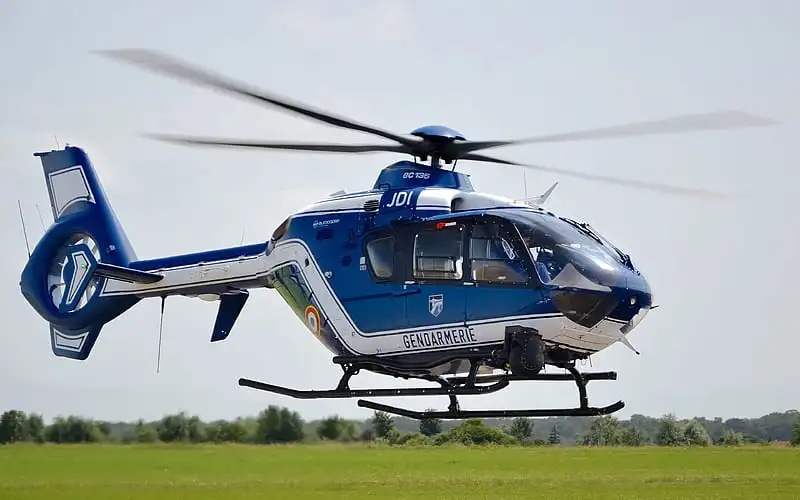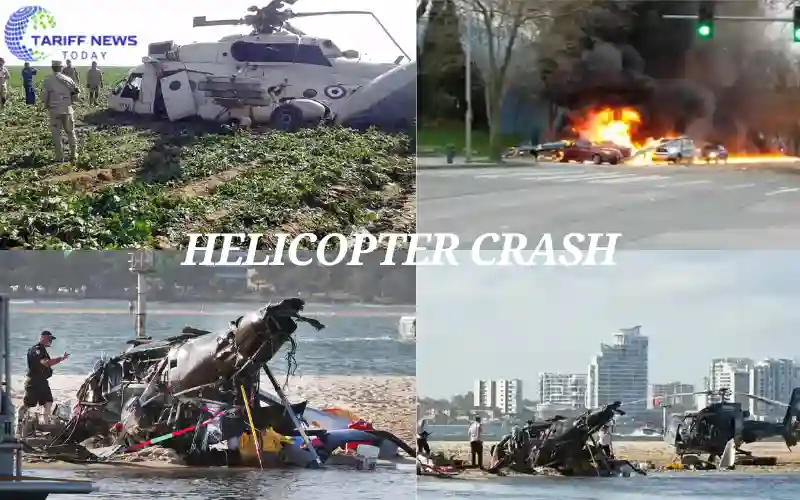A helicopter crash is when a helicopter falls from the sky. It can happen on land or in water. Sometimes it happens because of bad weather. Sometimes it happens because of a machine problem. A pilot mistake can also cause it. In a crash, people can get hurt. Rescue teams come to help quickly. They carry water, blankets, or even meals for survivors. Learning about crashes allows us to live safely. It also helps pilots fly better in the future.
What Is a Helicopter Crash
A helicopter strike happens when it falls from the sky. It can take place on land or water. Sometimes the pilot makes a mistake. Sometimes the machine stops working. Bad weather can also cause a crash. Helicopters are used for travel and rescue. A collision can hurt people. It can break the helicopter. Specialists study the crash to find out the cause. Learning about crashes allows human beings to be secure.
Why Understanding Crashes Matters
A crash can hurt people. It can damage property. It can scare communities. Learning why it came about is important. It enables the prevention of destiny accidents. Experts study the crash details. They check the weather. They look at the machine parts. They talk to the pilot if possible. They share what they find. This makes flying safer. It helps save lives.
Common Causes of Helicopter Strike
A helicopter can crash for lots of motives. Sometimes the pilot makes a mistake. Bad climate could make flying hazardous. Rain or fog can block the pilot’s view. Strong winds can push the helicopter off path. Engines can forestall working within the air. Broken parts can cause big problems. Birds can hit the helicopter. Running out of gasoline is very risky. Other aircraft can get too close. Flying too low can hit trees or buildings. Regular checks and proper training can stop many accidents.
Pilot Error in Helicopter Hit
Pilot error in a helicopter hit method the pilot made a mistake. Sometimes the pilot flies too low. Sometimes they fly in bad weather. They may not follow the right path. A small wrong move can be dangerous. It can make the helicopter lose control. Training helps pilots avoid mistakes. Good rest is important before flying. Clear rules help pilots stay safe. If something feels wrong, they should stop. Safety checks are very important. Just like food keeps us healthy, safety keeps helicopters safe.
Mechanical Failure and Equipment Issues
Mechanical Failure and Equipment Issues can cause big problems in a helicopter. Sometimes, a part stops working. It can be the engine or the rotor blades. Even small parts matter. If one breaks, the helicopter can be in danger. Pilots test the helicopter before flying. They look for cracks and loose elements. Engine oil and fuel must be clean. Wires and cables need to be strong. Good tools help fix problems early. If all parts are healthy, flights are safer. Safety checks save lives.
Weather-Related Helicopter Accidents
Weather-Related Helicopter Accidents are dangerous. Bad climate could make flying difficult. It becomes difficult to see with fog. The rain can make the floor smooth. Strong winds can push the helicopter out of the route. Snow can cover landing spots. Storms can damage the helicopter. Ice can form on the blades. Pilots have trouble controlling the chopper. Sometimes flights are delayed. This helps keep people safe. Good weather checks can prevent accidents.
Real-World Helicopter Strike Cases
Real-World Helicopter strike Cases show us what can go wrong. A pilot may make a mistake. Sometimes the climate is horrible. Powerful winds can push a helicopter far from its intended route. Heavy rain can block the view. Machines can break in the air. A broken part can cause a crash. Birds can hit the blades. Other aircraft can come too close. Rescue teams work fast to help. People can be hurt or scared. Each crash teaches us a way to be safer.
Military Helicopter Accident Examples
Military helicopters help in many missions. Sometimes, they have accidents. A training exercise in the desert ended in a crash. The crew had to land quickly. Another crash happened in the mountains. Bad weather made it difficult to see. In one case, helicopters hit each other. It was for the duration of a night exercising. One crash was caused by engine trouble. The pilot tried to control the fall. Rescue teams came fast to help. These events teach us to fly safer.
Famous Civilian Helicopter Crash Stories
Famous Civilian Helicopter strike Stories are often in the news. They tell about real events. Some crashes happened in cities. Some happened in the mountains. One story was about a tour ride. The weather changed very fast. The pilot tried to land. The helicopter hit the ground. Another story was near the sea. Rescue boats came quickly. People were saved from the water. These stories help us learn about safety.
Helicopter Strike Safety Measures

Helicopter strike Safety Measures are steps to keep people safe. Pilots need good training. They must check the weather before flying. The helicopter must be checked every day. All parts should work well. The seat belts must be strong. Pilots should follow all flying rules. They should avoid flying too high during bad weather. Radios let them stay in contact with the ground team. Rescue teams should be ready. At night, safety lights need to be switched on. These steps can help stop accidents.
Prevention Through Better Training
Prevention Through Better Training helps keep flights safe. Pilots train to handle flights in different weather conditions. They practice emergency landings. They study maps and flight routes. They learn how to talk to air traffic control. Pilots train to handle sudden engine problems. They practice how to avoid other aircraft. Training teaches how to stay calm in danger. It helps them make good choices fast. Better skills mean fewer accidents. Safe flying comes from careful learning. Good training protects everyone in the air.
Role of Aviation Safety Organizations
The role of aviation safety organizations is very important. They make flying safer. They check helicopters often. They teach pilots new rules. They study crash reports. They share safety tips with everyone. They work with the police. They train rescue teams. They help fix broken parts fast. They warn about bad weather. They make new safety plans. They want everyone to fly safely.
Aftermath and Recovery
Aftermath and Recovery is what happens after a crash. Rescue teams come fast. They look for people. Doctors help the hurt. Police check the area. Families are told what happened. Firefighters make the place safe. Investigators study the wreck. They try to find the cause. Helpers give food and water. People remember those lost. Slowly, life starts again.
Helicopter Crash Rescue Operations
Helicopter crash Rescue Operations are very important. When a helicopter falls, assistance should come fast. Rescue teams rush to the crash web site. They carry unique tools and first resource kits. Firefighters put out any fires. Paramedics care for injured people. Police keep the area safe. Divers may search if the crash is in water. Helicopters can bring in more rescue workers. Every minute is important to save lives. Teams work together to help everyone. Their quick action can make a big difference.
Honoring Victims with Helicopter Crash Memorials
Honoring victims with helicopter strike memorials is a way to show respect. Families come to remember their loved ones. Flowers are placed near the names. Pictures are sometimes shared at the site. People light candles to show love. Friends speak kind words about the victims. Songs are played to bring peace. The place is kept clean and safe. Children are told about the bravery of the people. Names are written so they are never forgotten. The memorial is a quiet place for thinking. It helps everyone feel close to those they lost.
Conclusion
A helicopter crash is very serious. It can happen to anyone. Bad weather can cause it. Machines can break in the air. Pilots can make mistakes too. Rescue teams work very fast. They try to save every life. Safety regulations can assist prevent injuries. We must learn from past crashes. This makes flying safer for all. Families need care and support. We should always hope for safe flights.



